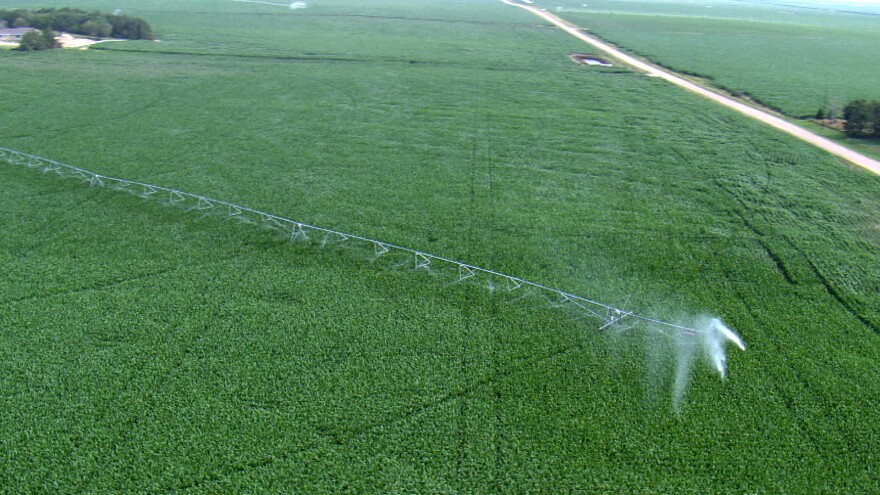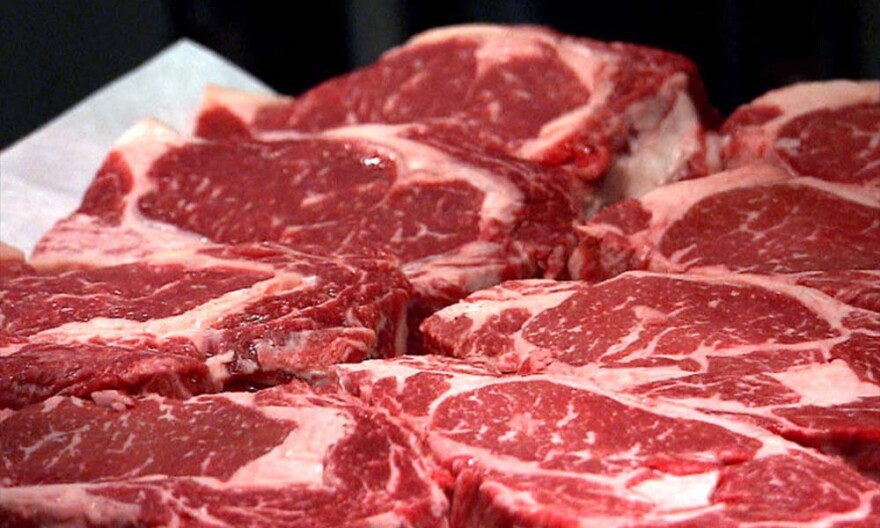When most Americans sit down to dinner, meat is often at the center of the table. This week Harvest Public Media is exploring some of the big issues in how our meat is made. Today, as part of the series "Choice Cuts: Meat In America," reporter Grant Gerlock looks at the growing global demand for meat, and how it could eat up more land.
Americans have a big appetite for everything meat. We smoke it, grill it, slice it, and chop it.
And we eat lots of it.
The typical American puts away around 200 pounds of beef, pork, and poultry every year. That’s true in many of the wealthiest countries. But developing countries are showing a growing appetite for meat and that’s setting up one of the biggest challenges for agriculture over the next few decades.
"Globally there have been very strong increases in livestock product demand," says Thomas Hertel, an agricultural economist at Purdue University. "And most of those increases have been in the poorest countries and the populous countries of the world--China and India, for example."
By 2050, there will be 9.6 billion people in the world, making for more potential meat eaters. On top of that, Hertel says, incomes are expected to rise in places like Southeast Asia and Sub-Saharan Africa.
"As they get more income, they spend a lot of that on livestock products," Hertel says. "And that’s what’s fueled these dramatic increases in livestock product consumption in much of the world."
The United Nations estimates the world will need to produce an additional 220 million tons of meat per year by 2050. That’s billions more chickens, pigs and cows.
And those animals have to eat. Mostly they’re fattened up on corn and soybeans. That means farmers from the Corn Belt to Argentina to Russia are planting massive crops and plowing up land, making big changes to the environment. Take China, where the growing middle class is hungry for meat, and livestock are hungry for corn and soybeans.
"They’re importing them like mad," Hertel says. "They’re importing them from the U.S. They’re importing them from Brazil and Argentina. … So you see the massive expansion into the Brazilian Cerrado."
The global population is on the rise, and with it, the number of meat-eaters will be rising as well. How are producers going to keep up? What does it mean for towns that are centered in the heart of meat production?
Ken Cassman, who studies global agriculture at the University of Nebraska Lincoln, says it's going to be "a race against time."
From 2002 to 2011, he says, the world plowed up another 25 million acres of land each year for farming – an area roughly the size of Indiana. He says scientists are in a race to help farmers grow enough grain without putting even more land to the plow.
"If you can’t, production of meat and crops will come from converting natural habitats that store biodiversity and carbon," Cassman says. "It will come at the expense of clearing those lands."
To avoid that, Cassman says global yields per acre will need to double. No small task, but he says there are parts of the world with a big production gap. The farms have good soil and good weather but aren’t raising much.
"Closing the gap often depends upon getting modern farming in the hands of farmers," he says.

Give them better seed, bigger machinery, more pesticides, advanced fertilizer and they won’t have to take more land. That kind of intensive agriculture has its own problems. The U.S. struggles with fertilizer running into in rivers and streams. Science must address that, Cassman says, but there’s also a risk in shying away from industrial ag.
Farming without fertilizers reduces nutrient runoff, but if everyone did that we’d have to cut the amazon rainforest down.
Of course, the world wouldn’t have to make so much meat if everyone ate less. In fact, meat-loving Americans have backed off a bit from beef as prices have gone up. But meat is a luxury few will be willing to give up, Hertel says.
"You could say the best way to manage carbon emissions is don’t drive cars anymore. Everyone walk to the office. Is that gonna happen? No. And people aren’t gonna stop eating beef," he says.
That leaves the meat industry with a lot of work to do to fill global demand. And in the meantime there are a lot of other issues to chew on: health concerns over how much meat Americans eat, questions about how antibiotics are used.
By the time 2050 comes around the meat on your plate may not be that different, but the story of how it got there could be.




